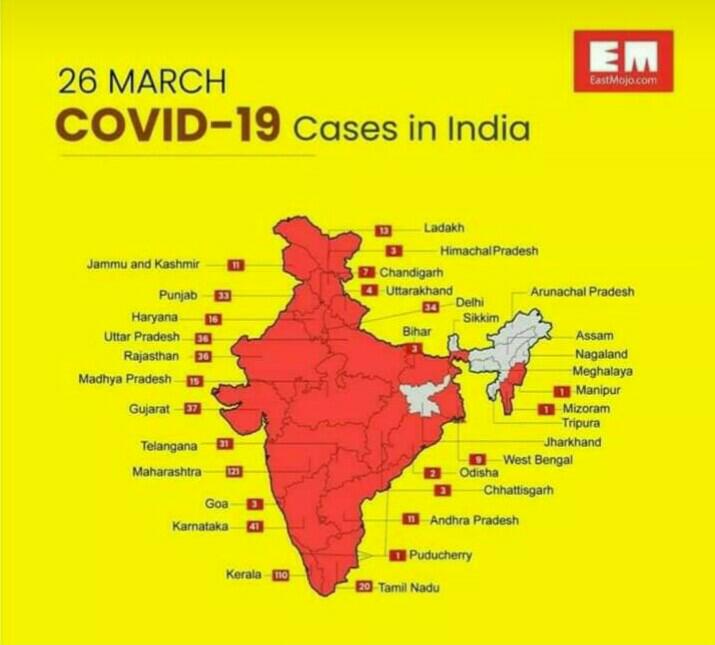ARE THESE UNCOLORED AREA SAFE?

Two North-Eastern states of India viz., Sikkim and Arunachal Pradesh are on guard as it shares its borders with China. And as corona virus epidemic in China probably originated at a market in Wuhan, China, so India’s fear is palpable.
PRIYA ASWINI
India’s frontier region of North East is considered at risk since it shares 98% of its borders with five countries (China, Nepal, Bhutan, Myanmar and Bangladesh). To curb the threat of COVID-19, India’s North East has sealed borders with the neighboring countries. The Assam Government has taken preventive measures at all the land ports bordering foreign countries (Bhutan and Bangladesh) and has stationed medical teams to screen people coming from the neighboring countries. The twin states of Manipur and Mizoram, which shares its borders with Myanmar, have sealed each and every points along the international boundary. Where in the one hand Mizoram has ordered increased surveillance of the penetrable stretches of its border with Bangladesh, on the other hand, Manipur has also imposed restrictions on the movement of people across the 398 km long border with Myanmar. Again, Sikkim and Arunachal Pradesh that borders China have not only banned the entry of foreigners but also suspended trade with China conducted through Nathu La pass in Sikkim. In Arunachal, PAP (Protected Area Permit) has been suspended. Along with the North East area, the whole of India left no stone unturned to restrain the air of the rapid proliferation of this menacing disease. Although sufficient preventive measures have been taken, it cannot be said that the virus won’t attack in the left out states of India. ONCE A CHANCE IS ALLOWED IS A CHANCE TO POUNCE. So we citizens should be wide awake and succor the Nation to crush the chain of this outspread.
NOTE : The virus enters a body via eyes, nose or mouth, so it is important to avoid touching face with unwashed hands. Washing of hands with soap and water for at least 20 seconds is highly recommended in all settings. At the very time, there are no specific vaccines or treatments for this disease. However, there are many ongoing clinical trials assessing embryonic treatments.





